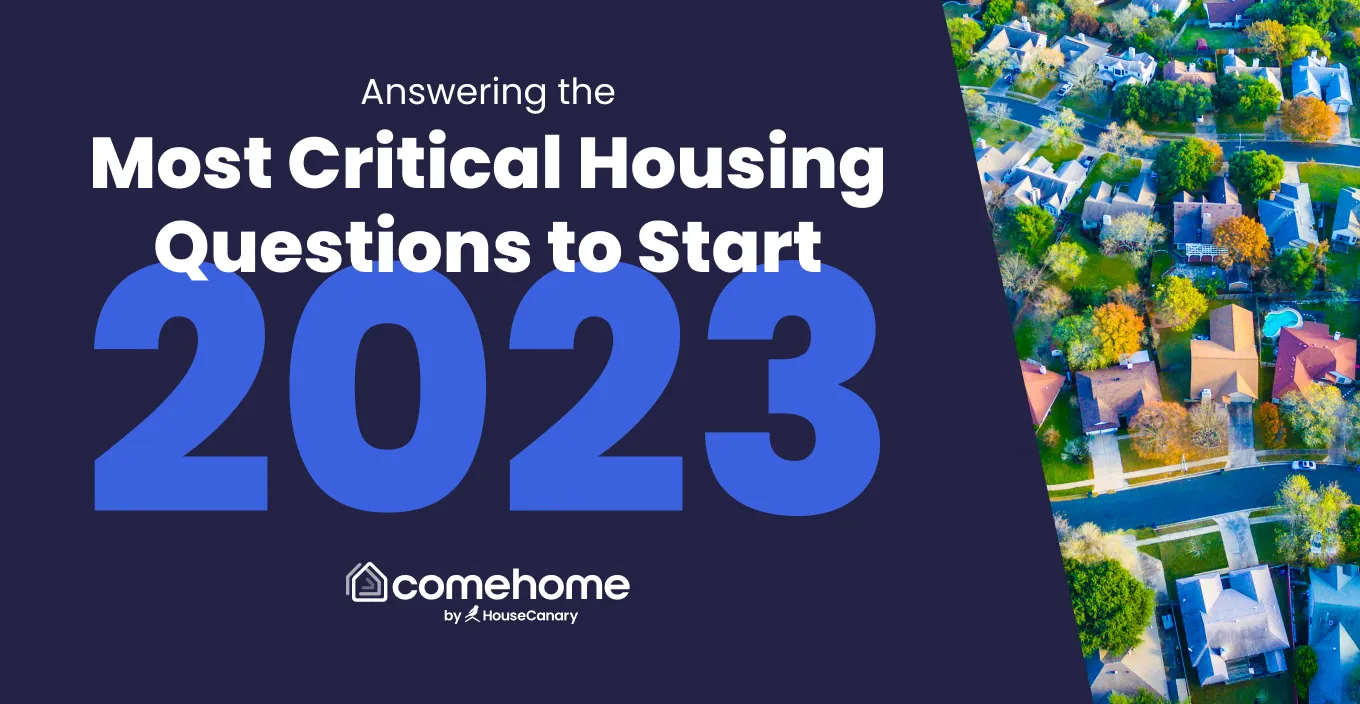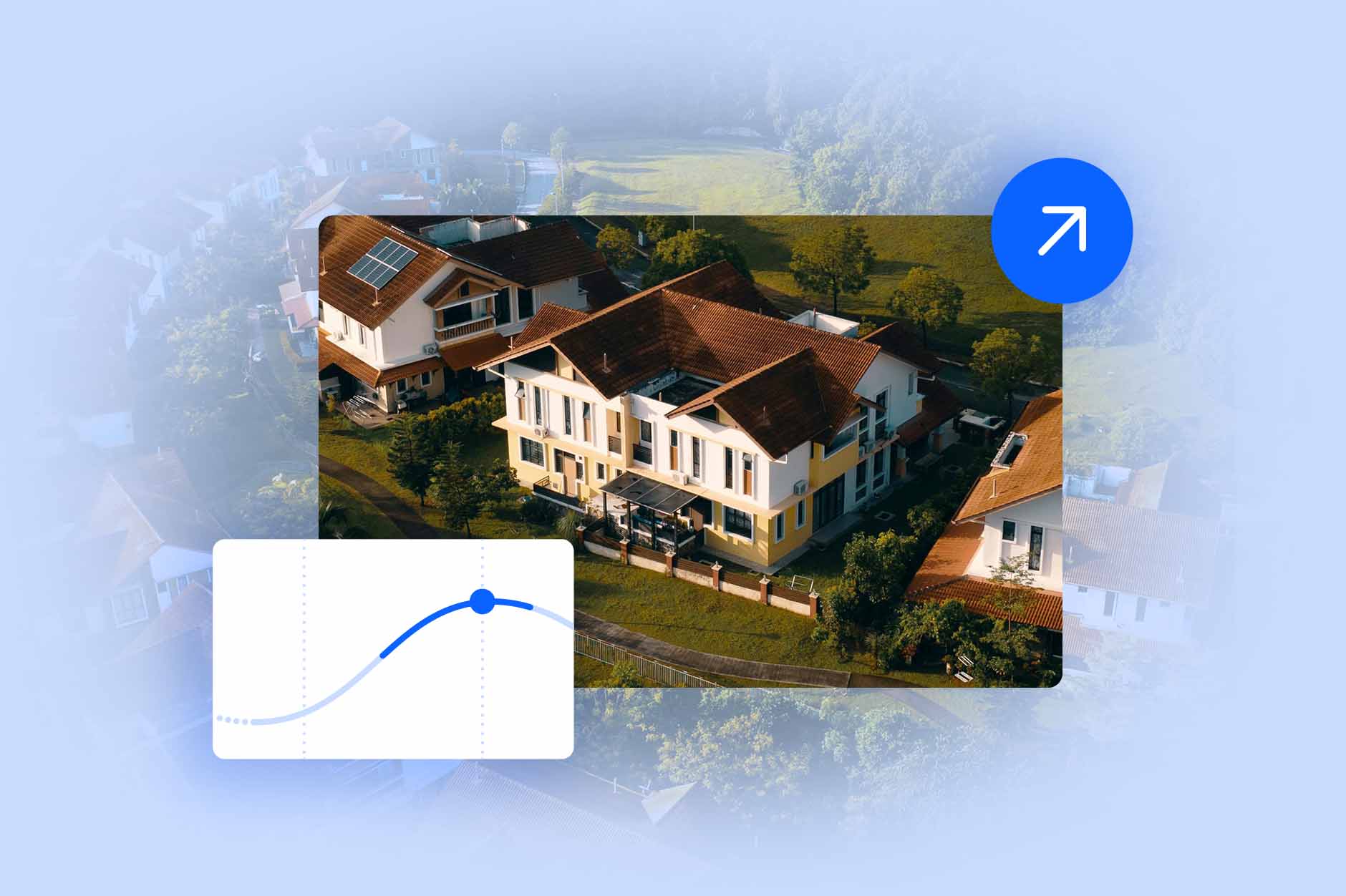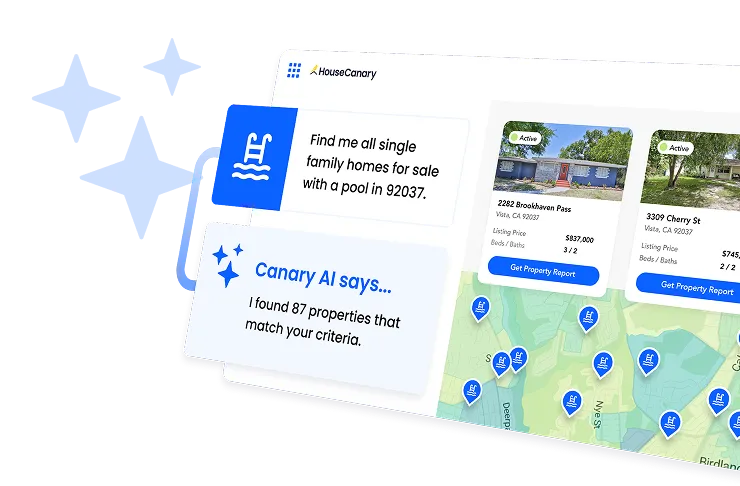
Now that nine straight months of declining existing home sales have slowed home price appreciation or brought prices down in many local markets, the media has doubled up on Horrible Housing headlines. But most headline writers aren’t market participants like home buyers, sellers, and lenders. So we in housing must work harder to give customers smart intel to make responsible decisions aligned with the cycle. To help lenders drive this education, below are detailed answers to the three most critical housing questions to start 2023. Let’s start with the inflation endgame.
What’s The Inflation Endgame & Mortgage Rate Peak?
Most estimates call for inflation to normalize in 2023, and it may have already peaked. Here’s a rundown.
Job one in the Fed’s thankless inflation fight is to slow the economy by tightening rate policy. Naturally, rate-sensitive housing got hit first and hardest as the Fed hiked rates from 0.25% to 3.75% since March 2022. Mortgage rates rose sharply all year and peaked at 7.375% on October 20, 2022, per Mortgage News Daily. Then mortgage rates plummeted to 6.5% on November 10, 2022 after October year-over-year Core Consumer Price Index (CPI) – one of the Fed’s preferred inflation measures for setting rate policy – came in at 6.3% after a September peak of 6.6%. Since then rates have held around 6.625%, and the next Fed meeting is December 14 where they’re expected to hike another 0.5% to continue cooling inflation. In the modern era, 2% is the Fed’s inflation comfort zone to meet its dual mandate of price stability and lowest possible unemployment (which is near five-decade lows of 3.7%). But we might not need to get all the way to 2.0% in 2023 to achieve more housing-friendly mortgage rates. It’s possible Core CPI dropping from today’s 6.3% to the low- to mid-3% range in 2023 would be welcomed by mortgage bond markets (that dictate rates), and rates would drop more than they have so far.
How close are we to this possibility?
Wells Fargo, Fannie Mae, and Goldman Sachs predict Core CPI inflation to end 2023 at 4.3%, 3.7%, and 3.2%, respectively. As for the rate outlook, Fannie Mae and the Mortgage Bankers Association (MBA) predict 30-year fixed rates to end 2023 at 6.5% and 5.2%, respectively. Why the difference? Fannie Mae chief economist Doug Duncan recently told me Fannie Mae believes that, while the Fed may hike less aggressively as inflation moderates, the Fed will keep overnight rates higher for longer, and this will pressure mortgage rates. However, the mortgage bond market has already shown it’ll rally hard – pushing rates down – on any positive inflation signals. And mortgage bond/rate markets will always move ahead of Fed policy actions.
When is the bottom for buyers and top for sellers?
Now let’s use this inflation and rate outlook to help home buyers and sellers figure out their market timing as this cycle plays out.
Headlines sell media attention, not homes. Therefore, headlines don’t focus on cyclical endgames, they just shout about what’s happening to rates, home sales, and home prices yesterday and today. But to really help buyers and sellers, we must focus most on how affordability looks for both (because sellers usually buy again) across a range of outcomes. Not even the best investors in the world can call exact market tops and bottoms, but readiness is the name of the game for housing – and all – market participants.
Here’s how it’s playing out...
Existing home sales declined in all of the last nine months (through October). Median prices of existing homes are now $379,100, down from a peak of $413,800 in June. New home sales declined six of the last nine months (through October), so prices have held up more. Median prices of new homes just peaked at $493,000. Yes, this new home price peak for October is unnerving, but that’s only 1 in 8 sales because existing and new home sales are 87.5% and 12.5% of total home sales, respectively.
Also builders have been holding the line on prices with upgrade, closing cost credit, and mortgage incentives. If today’s 8.9 months of new home inventory remains high or grows, new home prices will come down – or at least stop setting new peaks. At 7% mortgage rates, it was justifiable for buyers and sellers to be in wait-and-see mode. Now we’re closer to mid-6% rates, and if this holds or improves based on the Fed’s December 14 decision, 1Q23 may prove the sweet spot for market balance.
For buyers, inventory on existing home sales (which account for 7 of 8 sales) is still tight at 3.3 months, and 64% of existing homes are selling within one month. But prices are down. For sellers, prices haven’t plummeted and won’t if low inventory holds. Plus sellers are sitting on $10.5 trillion in tappable home equity, per Black Knight, which is up $4.31 trillion from pre-pandemic to present – even after factoring in recent overall home price declines. From here, both buyers and sellers must remain prepared by knowing that they can afford. And all affordability comes down to pairing local market analysis with individual borrower profiles.
What does all this mean for lenders?
A must-needed sweet spot for lenders is coming.
Buyers and sellers will likely move out of wait-and-see mode once rate markets have Fed path clarity, which we’ll get on December 14 and their subsequent FOMC meeting on February 1. This clarity will coincide with early-2023 ramping up to Spring homebuying season. Like the Fed’s thankless inflation fighting work, all you lenders must do the thankless work of pre-approving both buyers and sellers for new buys to get them ready for this moment. Then you must stay in front of them and keep them engaged until they get off the fence. And you must do all this while per loan costs just hit a new peak of $11,000 per loan, per MBA, and per-loan losses are running at -$624 as of 3Q22. If you have LOs that insist on making 100 basis points or more in this tough market, you have to make that work for your model, or you have to change your model. Part of that model change may be adjusting compensation, and part of it is getting real about what tech you need vs. want.
In this market, two certain tech stack needs are loan manufacturing (aka LOS) and marketing engagement to convert long-lead purchases.
ComeHome by Housecanary solves this long-lead purchase engagement with world class co-branded sites and apps for home search, and valuation estimates within 2% accuracy. In short, it works like this:
- Customers run their home search on HouseCanary’s world class ComeHome desktop site or mobile app
- Customers are presented Google Display Ad-quality promos right in their ComeHome experience
- You can customize promos in real-time with promo copy, links, and link destinations
- This identifies people ready to act, and connects them with loan officers directly
- Then, once they’re pre-approved, the constant engagement on homes and prices drives conversion and integrates real estate agents into the process
- It’s up and running immediately with these functions even before marketing system integration
If you’re interested in learning more, schedule some time here with a ComeHome expert.
When home prices are the biggest question all consumers have, ComeHome is how you bring them into the funnel, keep their attention, keep their real estate agent looped in, and get them closed. We’re nearing the end of what may prove to be the toughest quarter of this cycle. I hope this intel update helps you as you compete for the 3.5 million purchase units available in 2023.
If you have any questions, contact the ComeHome team.














.jpeg)








